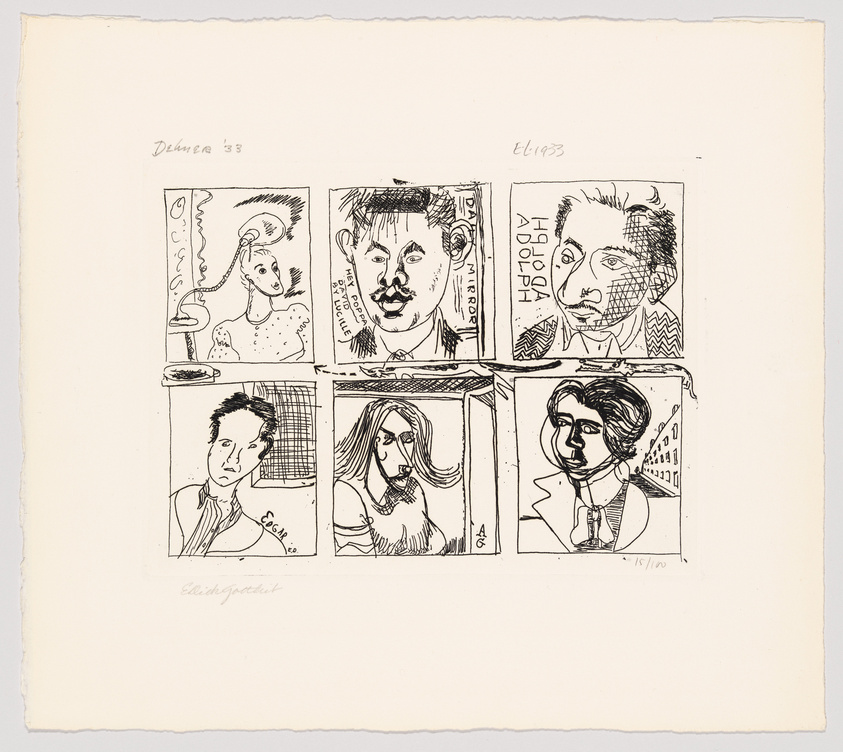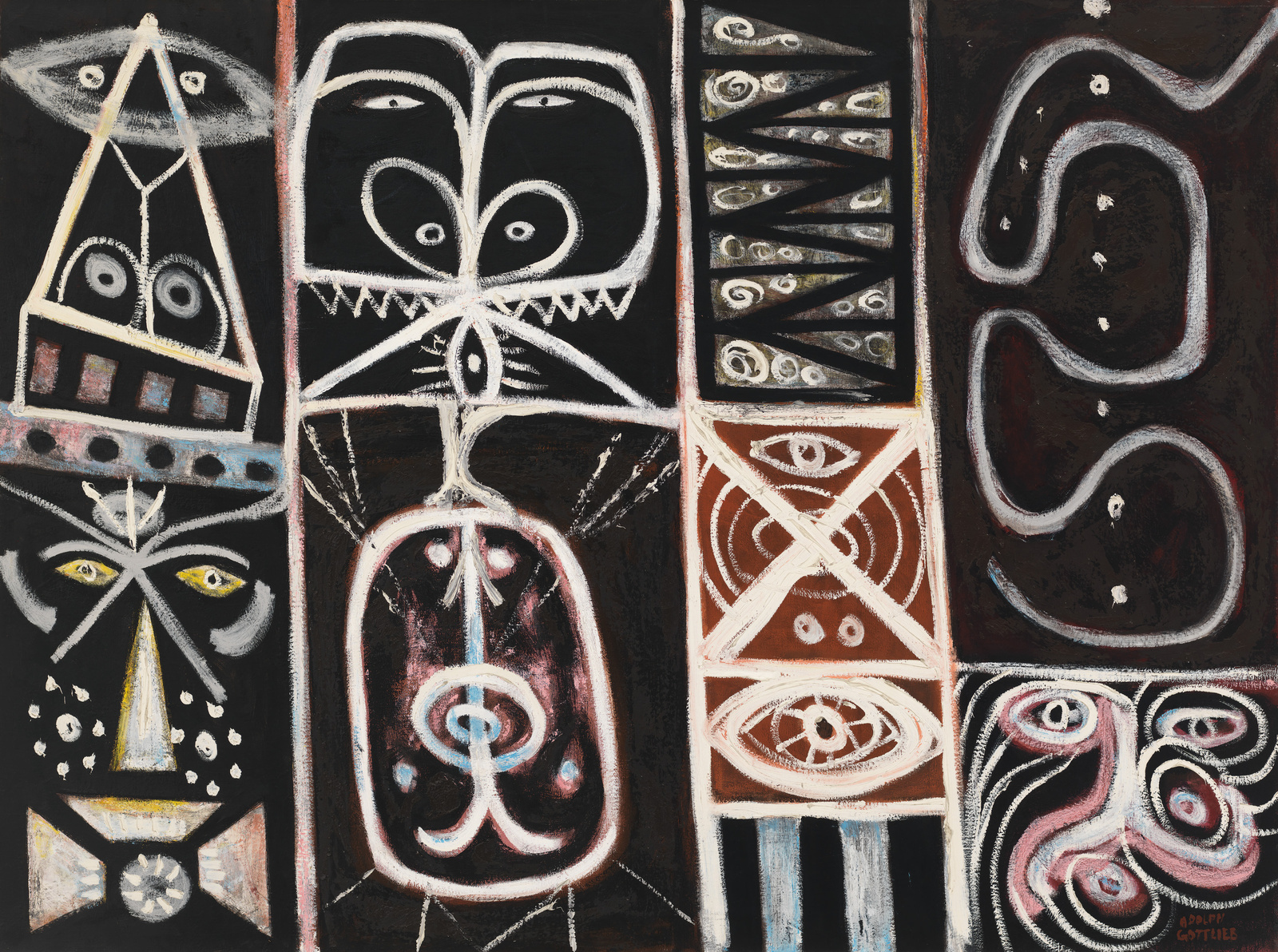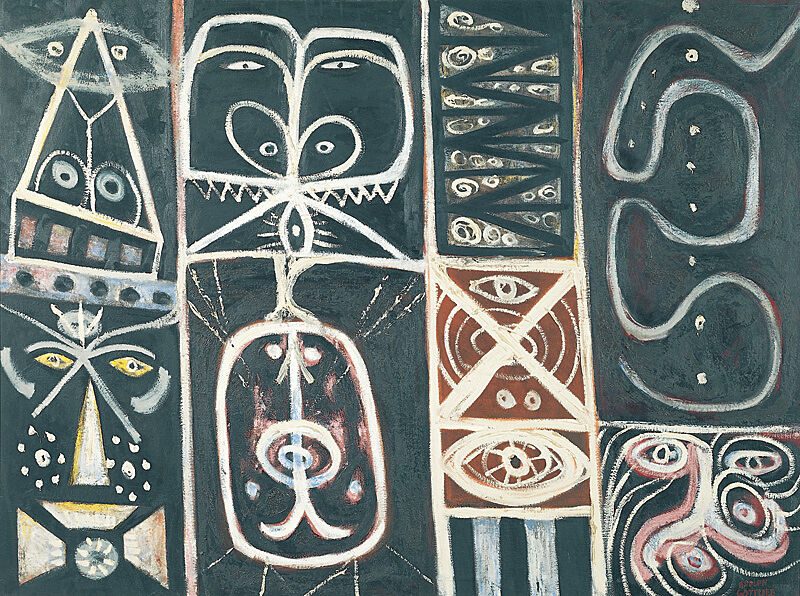Adolph Gottlieb, Vigil, 1948
July 10, 2012
0:00
Adolph Gottlieb, Vigil, 1948
0:00
Narrator: In 1948, Adolph Gottlieb painted this dark, enigmatic canvas dominated by images of eyes. Titled Vigil, the painting belongs to a body of work the artist called Pictographs. Like many other artists of the postwar period, Gottlieb preferred to work in a semi-abstract mode. In his painting, he attempted to tap into the world of the subconscious by using images and symbols open to multiple interpretations.
Notice how this canvas is divided into rectangular sections. Look at the one second from the left. An archaic face appears at the top, with the suggestion of a body and feet at the bottom. Now look at the panel on the far right. Notice the thick line that circles down from the top. It suggests a river, a path, or even a snake. Gottlieb found inspiration in African tribal and Native American art. Primitive art, he said, was in touch with the subconscious.
In a 1960s radio program, the artist described his Pictographs:
Adolph Gottlieb: (Archival audio from Pacifica Archives) I would start by having an arbitrary division of the canvas into rough rectangular areas, and with the process of free association I would put various images and symbols within these compartments. And it was irrational; there was no logical or rational design in the placing of these. It was purely following an impulse, trying to use the method of free association. And then when all of these images and symbols were combined, they could not be read like a rebus. There was no direct connection from one to the other. However, by the strange juxtapositions that occurred, a new kind of significance stemmed from this juxtaposition.
. . . My favorite symbols were those which I didn’t understand. If I knew too well what the symbol signified, then I would eliminate it because then it got to be boring. I wanted these symbols to have. . . a certain kind of ambiguity and mystery.
In Signs & Symbols.



